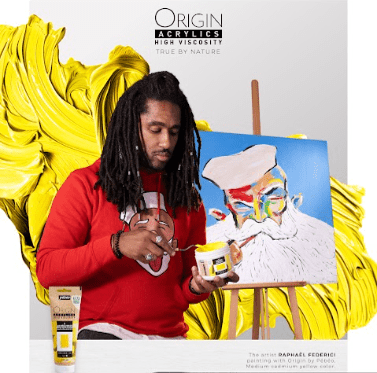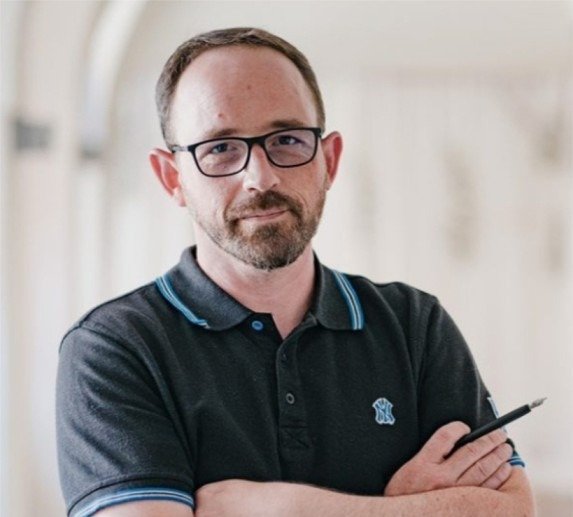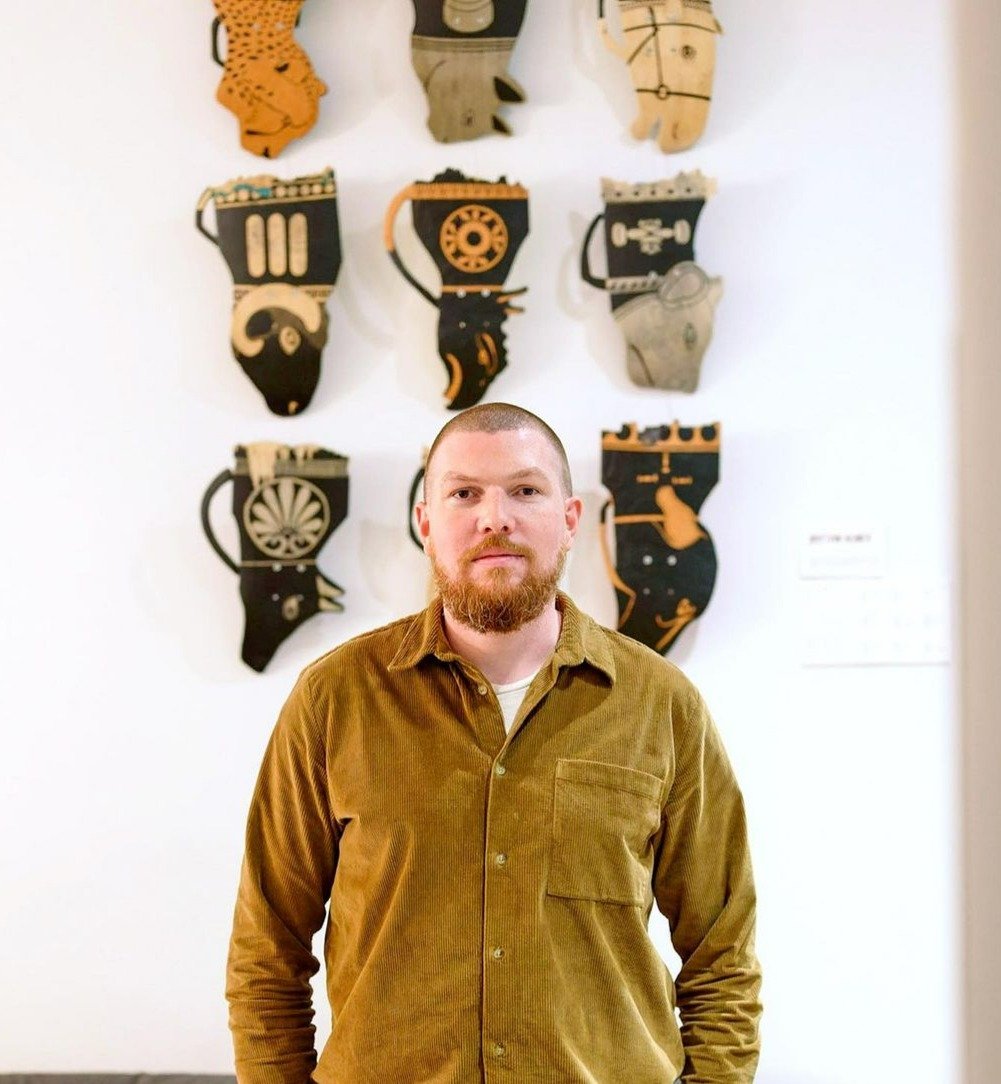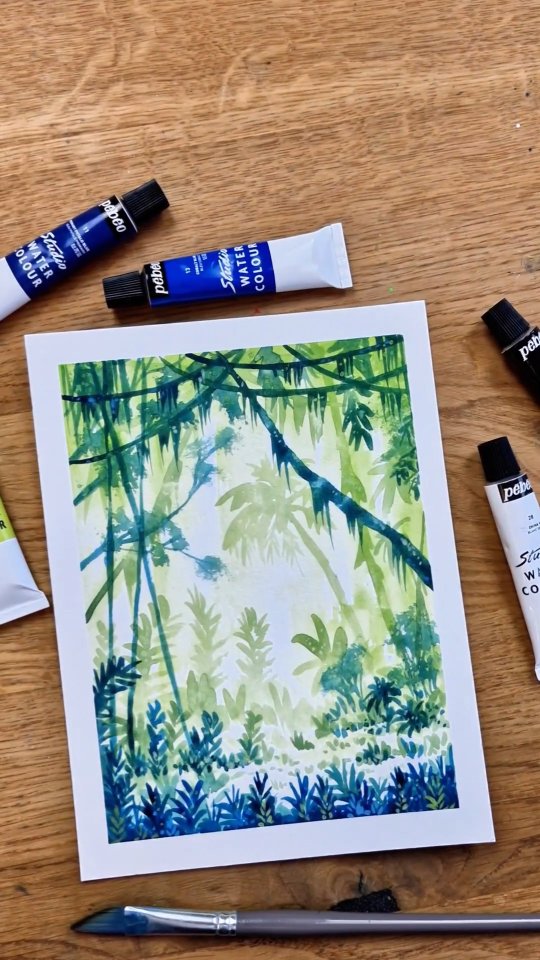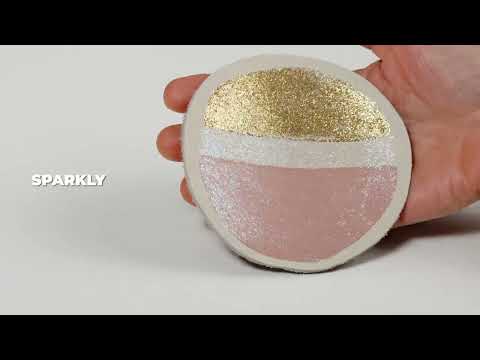JEAN-JACQUES SURIAN : UNE FIGURATION LYRIQUE
28/04/2021
“Inclassable” comme le veut la critique mais surtout figuration unique d’une trajectoire qui aspire tout (et ses petits riens…) sur son passage, Jean-Jacques Surian possède en lui une dimension rabelaisienne et une vision propre à lui du monde es beaux arts et la peinture artistique… A la fois vorace et jubilatoire mais profondément intime et fraternelle. Casseur de codes et brouilleur de vérités, il rappelle aussi le sens premier de l’iconoclaste qui au VIIIe siècle détruisait les images saintes parce qu’elles représentaient trop bien (ou trop mal ?) l’ordre établi. Cette riche interview, accordée à Patricia Chaveau, directrice de la communication de Pébéo, est à la mesure de son œuvre… Alors “Buvez ! Afin d’éviter que la soif advienne”, comme disait Gargantua !
“AU COMMENCEMENT ÉTAIT LA VIOLENCE…” DIT DE VOUS LE PROFESSEUR JEAN ARROUYE EN ÉVOQUANT VOS DÉBUTS AU MILIEU DES ANNÉES 60. PARTAGEZ-VOUS CETTE OPINION ? ET SI OUI, QUELLE EST CETTE VIOLENCE ?
Jean-Jacques Surian : Je suis un enfant de la guerre ! Dans les années 50, la guerre était présente dans toutes les conversations. Indochine, Algérie… Je baignais dans une atmosphère où tout n’était pas aussi “merveilleux” que ce que l’on voulait nous faire croire. Lorsque je suis entré à l’Armée, ma peinture était inspirée de ma vie : les évènements des années 68 qui passaient en boucle à la TV, les rapports de force entre les étudiants et la police, les pavés et les voitures volées… Cet “environnement” m’a considérablement touché à l’époque. Il explique toutes ces séries de tableaux où se confrontent uniformes et civils souvent séparés par des panneaux d’interdictions. Cette idée de l’interdit, omniprésente à l’époque, m’a beaucoup marqué.
ENTRE 1975 ET 1976, VOUS COMMENCEZ À RÉINTERPRÉTER VAN GOGH ET SON ŒUVRE. COMMENT VOUS EST VENUE CETTE IDÉE ?
Jean-Jacques Surian : En 1970, j’ai changé. J’ai pris le contre-pied de ma période précédente en peignant des tableaux inspirés par les comédies musicales, les stars de cinéma et les films américains des années 50. Donc absolument pas en prise avec l’époque mais, plutôt avec mon imaginaire et avec la photographie et le cinéma qui m’ont toujours nourri (et encore aujourd’hui !). L’histoire de Van Gogh m’est venue au sortir de cette période “cinéma américain”, après avoir vu le grand film de Vincente Minnelli “La vie passionnée de Van Gogh” (sorti en 1956). Ce mythe de l’artiste maudit - il faut souffrir pour être célèbre - m’a intéressé. Alors après avoir lu les lettres de Van Gogh à son frère Théo, j’ai inventé une “nouvelle” vie de Van Gogh… comme un film qui se serait passé autrement. L’idée était : s’il n’était pas mort, s’il ne s’était pas suicidé, peut être que 3 mois après, il serait devenu une grande star… Finalement, une histoire qui peut basculer dans le drame ou… dans la réussite ! J’ai donc commencé en 1975 une vie de Van Gogh à l’opposé de ce qu’il avait vécu. Par exemple, j’ai peint Van Gogh recevant la Légion d’honneur des mains de son ministre de la Culture. Je l’ai sorti de son contexte et projeté dans l’actualité de cette époque-là… Van Gogh entouré de superbes créatures, professeur aux Beaux-Arts, voyageant aux USA… Cette série de tableaux, complètement utopique et mythique, m’a passionné ! Je lui ai inventé une vie de réussite pour “casser” un peu son image d’artiste maudit qui est, selon moi, une absurdité. On peut être maudit un jour et le lendemain, adulé.
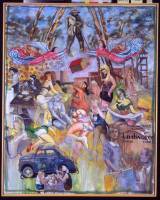
APRÈS VAN GOGH, VOUS VOUS “ATTAQUEZ”, AU MILIEU DES ANNÉES 2000, À UNE “RELECTURE” DE CÉZANNE. Y A-T-IL UNE CONTINUITÉ ARTISTIQUE AVEC CELLE DE VAN GOGH OU PARTICIPE-T-ELLE DE TOUTE AUTRE VOLONTÉ ?
Jean-Jacques Surian : Non, il n’y a pas de continuité, Bruno Ely, directeur du musée Granet d’Aix-en-Provence en est à l’origine. Alors qu’il préparait son “Année Cézanne”, il m’a demandé de réfléchir (connaissant, bien sûr, mon travail autour de Van Gogh) à une exposition autour du maître. J’ai réfléchis 2 à 3 jours et me suis aperçu que, si Cézanne était moins maudit que Van Gogh, lui aussi n’avait pas eu de succès de son vivant. Après la lecture de quelques textes d’autres artistes, celui de Matisse qui disait “Cézanne, sorte de Dieu de la peinture”, m’a beaucoup accroché. A partir de cette citation, j’ai dit à Bruno Ely que j’étais partant.
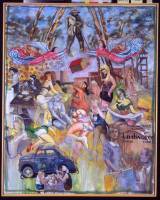
A CE MOMENT-LÀ PRÉCIS, QUEL VA ÊTRE “VOTRE” CÉZANNE ?
Jean-Jacques Surian : C’est l’idée du Saint Homme protégé par les anges, qui me guide. Je suis toujours dans l’imaginaire ! Cézanne a des révélations… presque mystiques ; des visions de tableaux anciens. Cézanne adorait la peinture classique, la Renaissance… J’ai donc crée des tableaux “renaissants”, dont le titre conducteur est “La vie édifiante de Cézanne”. Avec un tel recours à ce terme “édifiant”, inspiré du registre religieux (comme si c’était la vie édifiante de Ste Thérèse), je crée le côté mythique de l’homme, je joue le jeu de l’imaginaire. C’est de la pensée que je mets en image, une histoire parallèlle. Pour cette exposition, nous avons publié avec ma femme Anne Marie, un livre : “Gloria in excelsis Cézanne”, conçu comme une bible. Enrichi de dessins brodés il invente une vie de Cézanne, celle d’un saint. Très jeune, il a la révélation de la peinture par sa mère… Ses dessins d’école sont extraordinaires, il est magnifique, il est très doué… Tout est faux ! Je réinvente sa vie, une sainte et belle histoire, comme on peut en lire dans les livres religieux. A la fin du livre, il monte aux cieux, protégé par les anges. Il est “assis” entre Picasso et Matisse.La pièce mettant un point d’orgue à l’exposition ce fut le « Grand reliquaire » aux objets imaginaires sacralisés. C’est aussi absurde… que réel !

LA CRITIQUE VOUS QUALIFIE SOUVENT “D’INCLASSABLE”. QUE VOUS INSPIRE CE QUALIFICATIF ET AUJOURD’HUI, COMMENT VOUS SITUERIEZ-VOUS ? “DE QUEL CÔTÉ” DE LA PEINTURE ?
Jean-Jacques Surian : Mon histoire est née avec "la figuration narrative", une exposition que j'avais vue à Paris en 1966. Mais je n'ai jamais voulu faire parti d'un courant. Je me suis toujours tenu à l'écart. Je suis plutôt un solitaire. Mes maîtres sont donc la figuration narrative mais aussi l'expressionnisme allemand et l'abstraction parce que ma manière de composer la toile est très abstraite. Mais ce que je revendique le plus, c'est d'avoir utilisé la photo et le cinéma. Dès 1967, j'ai utilisé ces médias pour travailler la peinture. Dans la région, j'étais le seul. Maintenant il existe des milliers d'artistes dans le monde qui s'en servent ! Aujourd'hui, je ne fais toujours partie d'aucun mouvement, je suis abstrait, je suis figuratif...une figuration lyrique. Un artiste atypique, inclassable ; mais j'en suis très fier. J'ai mes propres sujets et mon propre imaginaire, Cézanne, van Gogh... peu d'artistes se sont attaqués à de telles références. Certains ont utilisé Cézanne pour faire leur propre peinture mais ils n'ont pas travaillé comme moi sur une vie imaginaire de l'artiste.
VOS RÉFÉRENCES SONT TRÈS ÉCLECTIQUES ET VOTRE SOURCE D’INSPIRATION PARAÎT INÉPUISABLE…D’OÙ VIENT-ELLE ET COMMENT LA RENOUVELEZ-VOUS ?
Jean-Jacques Surian : C’est simple ! Je cultive sans cesse l’envie de créer , je suis toujours sur la brèche, dans l'image, dans un film...qui déclenche quelque chose. Depuis quelques années je me suis également tourné vers la lecture, avec notamment La Divine comédie de Dante, et vers les voyages (alors que je suis plutôt casanier !). Ainsi, un séjour récent d’un mois en Chine a-t-il déclenché chez moi toute une série d’œuvres. Désormais, je travaille sur le thème des autoportraits , des autoportraits de moi, enfant et adolescent. Je réunis des souvenirs qui se mélangent
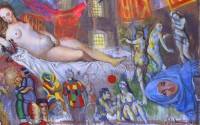
POURQUOI AUJOURD’HUI ?
Jean-Jacques Surian : C’est l’âge ! Je ne pouvais pas le faire à 20 ans… C’était trop près… Maintenant, j’ai des souvenirs ! Je travaille surtout les tranches d’âge entre 10 et 15 et entre 15 et 17 ans lorsque j’ai commencé les Beaux- Arts. Je mets dans ces tableaux des histoires actuelles. Par exemple, mes petites nièces (qui sont les filles de ma nièce), pour parler de ma nièce. Je saute une ou deux générations pour raconter des souvenirs vécus avec eux à cette époque là. Je mélange un peu histoires personnelles et actuelles. C’est comme une broderie du temps. Autres exemples : dans un de mes tableaux, figure scène de mariage , qui pourrait être le mien... Mais en vérité c'est celui de Brigitte Bardot parce que c'était l'air du temps à l'époque. Ce sont des jeux de raccourci. Comme encore cette Vièrge qui est dans le tableau et me ramène à ma première communion.
VOUS MÉLANGEZ DE TRÈS NOMBREUSES TECHNIQUES : HUILES, ENCRE, CRAYONS, ACRYLIQUES, FUSAINS, VERNIS, PASTELS... POURQUOI ?
Jean-Jacques Surian : Pour montrer qu’il reste du temps… Quand figurent dans le tableau des morceaux ou éléments qui sont moins terminés que d’autres, on induit qu’il pourra y avoir des modifications. Un tableau doit être vivant. Un tableau fini n’est pas nécessairement achevé ... Si tout est parfait et terminé, le tableau est mort… Il ne respire plus. Alors, forcément on va retrouver du fusain, de l’acrylique et de l’huile, mes 3 techniques actuelles, puisque j'ai un peu laisser tomber le pastel et vernis. Mais au final, pastel, acrylique, aquarelle ou gouache sont des pigments. Des matières qui donnent une surface différente - donc vivante- et des images qui ne se ressemblent pas, ni en terme de figuration ni en terme de finition technique. On est là dans l’œuvre qui bouge, qui n’est pas fixée.
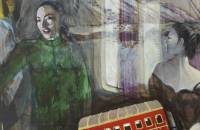
BRUNO ELY, DIRECTEUR DU MUSÉE GRANET-AIX-EN-PROVENCE, AFFIRME “CE QUE L’ON RESSENT AVANT TOUT DANS LES ŒUVRES DE JEAN-JACQUES SURIAN, C’EST UNE JUBILATION, UN PLAISIR EXTRÊME, UNE SORTE DE JOUISSANCE, JOUISSANCE DE LA PEINTURE MÊME.“ CONSIDÉREZ-VOUS EN EFFET QUE C’EST LE PRINCIPAL TRAIT D’UNION DE TOUTES VOS ŒUVRES JUSQU’À AUJOURD’HUI ?
Jean-Jacques Surian : J’ai du plaisir à organiser les couleurs. Ce plaisir, il est dans ma nature et j’espère le transmettre au public. Il doit se voir. Après, le tableau est une aventure, une nécessité qui est au bout de cette aventure. Je n’applique pas de recettes comme dans les arts appliqués - la publicité par exemple - où est posé un problème qu’on résout par l’image. Un artiste doit fuir l’art appliqué et appliquer, au contraire, une pensée qui lui est personnelle. C’est une interaction entre le décor et la main qui doivent fonctionner ensemble. Le rapport au geste et à la couleur est charnel. Comme une vraie rencontre amoureuse… C’est pour cela que je ne peindrai jamais un tableau qui s’appellerait “Autoportrait”. Ce sera toujours une série d'autoportraits. Une série se déroule tout au long de la découverte et doit s’arrêter avant l’assèchement des envies. C’est un rapport amoureux entre moi et le tableau. Puis à un certain moment, je change…
QUELS SONT VOS DERNIÈRES ŒUVRES ?
“Les fragments amoureux” que j’ai exposés à Paris ; une série que j’ai gardée précieusement. Elle date de 3 ou 4 ans. Elle a été peinte d’après le livre de Roland Barthes “Fragments du discours amoureux” philisophe contemporain, Barthes analyse tous les états amoureux de l’homme et de la femme avec des fragments piochés chez d’autres auteurs ; des références, des analyses qui portent sur les états amoureux comme l’abandon, la rupture, la joie, l’attente, les larmes… de joie ou de douleur ; l’attente dans un bar : quelqu’un qui attend et quelqu’un qui ne vient pas ; le souvenir de quelque chose qui s’est passée et qui ne se reproduit plus. Pour ma part, je ne cherche pas à illustrer le livre mais j’en garde certains éléments comme les titres. Par exemple, “Montrez-moi qui désirer” est le titre d’un fragment mais aussi en soi un fragment du texte. Donc, je prends des fragments des fragments je garde l’éblouissement, je sacrifie l’image à l’imaginaire autour de ces titres, je mets des éléments qui sont actuels ou des passages dans des lieux connus : la Canebière, le musée d'Orsay, des éléments qui sont quand même liés à mes visites dans ces lieux. Avec les photos que j’ai prises, je crée une histoire autour de ces lieux avec des techniques multiples comme l’aquarelle, la gouache, le collage ou l’encre de chine. C’est un peu des rébus ; des éléments sont dissociés sur le papier et c’est au spectateur de voir et de faire sa propre histoire. Selon son bon plaisir… On y revient !Jean

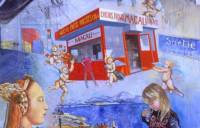
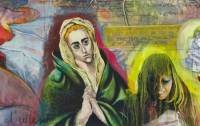

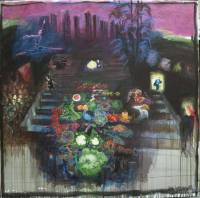

EXPOSITIONS COLLECTIVES
1967/ Paris, France, maison des beaux-Arts, sélection du prix de la jeune peinture
1980-81/ Marseille, France, « 10 ans de création », Musée Cantini
1989/ Jouy en Josas, France, Fondation Cartier, « Couleur Sud »
1995/ Rotterdam, Pays-Bas, Ram-Galerie et Alliance Française
1996/ Paris, France, Salon de Montrouge (Prix)
1998/Céret, France, Musée d’Art Contemporain ; Donation J.P Ali
2000/ Canton, Chine, Musée d’histoire « Monte Christo et le Château d’If »
2001/ Kagawa, Japon, Salon Franco /Japonais, Marugamé et Musée de Shionoé
2008/ Shanghaï, Chine, galerie New B, Cheng Dù « 12 Artistes de Marseille »
2010 / La Roque d’Anthéron, France, Abbaye de Silvacane, « De l’écriture au geste en Méditerranée ».
EXPOSITIONS PERSONNELLES
1975/ 88/ 91/ Marseille, Galerie Athanor,
1987/ Paris, Galerie Eric Fabre, et Amsterdam « Kunstrai 87 »
1995/ Paris, Ecole Nationale supérieure des beaux-Arts
1996/ Aix-en-Provence, Galerie Espace 13 (galerie du conseil général)
2000/ Arles, Fondation Vincent Van Gogh
2004/ Aix-en-Provence, Musée des Tapisseries, « La Divine Comédie »
2006/ Aix-en-Provence, Musée des Tapisseries « Cézanne une Relecture »
2010 / Avignon, Cloître St Louis, invité d’honneur dans le cadre du :« parcours de l’art »
BIBLIOGRAPHIE
2011 / Catalogue, Galerie Théo de Seine, Paris, « Fragments Amoureux »
2006 / Catalogue,Musée des Tapisseries, Aix-en-Provence, «Cézanne une relecture»
2004 / Catalogue, Musée des Tapisseries, Aix-en-Provence, « La divine comédie »
2002 / Catalogue, Atelier Thérèse Neveu, Aubagne, céramiques : « Inferno »
2001 / Livre, « Abécédaire », édition Images en Manœuvres.
2000 / Catalogue, Fondation Vincent Van Gogh, Arles , « Le retour de Van Gogh »
1999 / « Peintures et Sculptures à Marseille « Alain Paire » édit. Jeanne Laffi
1996 / Catalogue, Galerie du Conseil Général, "Faits divers"
1993 / Livre, « Monographie » édition Athanor / Muntaner
1991 / Carnets de l’Artothèque Antonin Artaud, N° 3
1990 / « Marseille et les Peintres » Marielle Latour et Jean Boissieu, édit. Jeanne Laffitte.
COLLECTIONS PUBLIQUES
1969/ Avignon, Musée Calvet
1988-93/ Marseille, Fond communaL
1995 / Marseille, F.R.A.C, Provence-Alpes-Côte- d’Azur
1998 / Céret, Musée d’Art moderne,(donation J.P Alis)
2006 / Musée des Tapisseries, Aix-en-Provence
2010 / Pavillon de Vendôme, Aix-en-Provence
2011-12/ Céret , Musée d’Art moderne : 4 oeuvres de grand format (donation J-J Surian)
COLLECTION D’ENTREPRISES ET FONDATIONS
Fondation Regards de Provence,Marseille
Fondation Vincent Van Gogh, Arles
Collection Société Pébéo, Gémenos
Collection « Vacances Bleues » Marseille
Produits Connexes
à lire aussi
@PEBEO Suivre Pébéo sur Instagram
Newsletter
Inscrivez-vous à notre Newsletter et restez informé de nos actualités. Pour en savoir plus sur la gestion de vos données personnelles et pour exercer vos droits, cliquez, ici
